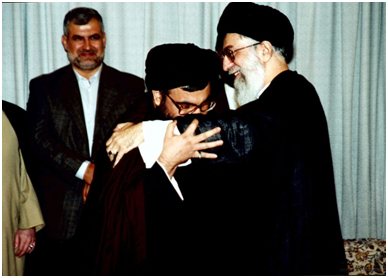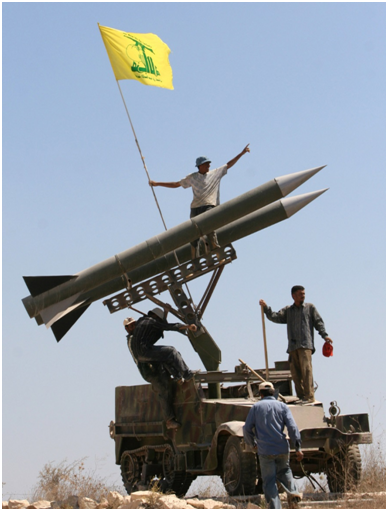Report - November 14, 2018

Lebanon’s Political Dynamics
Lebanon gained independence from France in 1943. Responding, in part, to Maronite nationalist aspirations, France—then the mandatory power in control of the lands that would become Syria and Lebanon—created what would be known as the State of Greater Lebanon, combining the Mount Lebanon Mutassarifate, the locus of Maronite settlement, with adjacent predominantly Muslim areas. While this made the Maronite enclave viable, it also included in the would-be state population groups with identities and affiliations strongly at odds with that of the Maronites. This would become the source of Lebanon’s regionally unique diverse social fabric, but also the cause of its chronic domestic instability.
Maronite preeminence was built into Lebanon’s early system. The 1943 National Pact—an informal agreement divvying up sectarian political power in the country—afforded the Maronites primacy of place based on the 1932 census, when the Eastern Christian sect formed a majority, and gave Christians the country’s most powerful political offices and a 6:5 majority in parliament. This census was the last Lebanon would ever conduct, in order to maintain the fiction of sectarian balance and avoid religious conflict.
Lebanon’s Christian-Muslim divide had broader political implications. Maronites and many smaller Christian sects were oriented towards Europe and the West. Generally, they rejected Pan-Arabism and denied that Lebanon was an Arab country. For many Lebanese Muslims, however, their country was still an integral part of a greater Syria and the wider Arab and Muslim world—and if the countries comprising greater Syria could not reunite as one state, they should at least be closely tied together culturally and politically.
Sectarian tensions over Lebanon’s identity intensified because of the influx of Palestinian refugees after the 1948 Arab–Israeli War and after the expulsion of the Palestine Liberation Organization (PLO) from Jordan in the early 1970s. Maronites vehemently opposed the refugees’ naturalization, which would have tipped Lebanon’s delicate sectarian scales against them. The 1969 Cairo Agreement, which removed Palestinian refugee camps from under Lebanese state authority, was meant to alleviate Lebanese-Palestinian tensions. Instead, the pact ended up heightening sectarian conflicts by allowing the PLO to establish a state-within-a-state in Lebanon, soon leading to violent clashes with Maronite militias. In 1975, these skirmishes sparked the bloody Lebanese Civil War, which lasted until 1990.
Lebanese Sunnis and Druze, resentful of continued Maronite dominance, sided with the Palestinians against their Christian compatriots. Lebanon’s army fractured along sectarian lines, and an alphabet soup of sectarian militias soon emerged, each inviting the assistance of one foreign backer or another—most critically, Syria and Israel
Syria never properly recognized Lebanon’s independence and saw the civil war as an opportunity to reassert control over that country and reverse the effects of the French mandate. Israel, allied with the Maronite Phalangist party, invaded to expel the PLO from the country and create the conditions for Lebanon to sign a peace agreement with Israel.
Israel would succeed in expelling the PLO, but its political aspirations ended in failure. Syria, by contrast, emerged as Lebanon’s new hegemon due to the 1989 Taif Agreement, which ended the civil war.
Now, only vestiges remain of Maronite preeminence in Lebanon. The Taif Agreement gave Sunni and Shiite Muslims parliamentary parity with Christians and increased the powers of their allocated key offices—prime minister and parliamentary speaker—at the expense of the Maronite-controlled presidency.

Lebanese Sectarianism
Sectarianism is built into Lebanon’s national DNA. While it accounts for Lebanon’s much-touted multi-religious tapestry, it is also an outgrowth of the country’s lack of a supra-religious, unified national identity and prevents the creation of such an identity. Per Lebanon’s National Pact, the country’s highest political offices are apportioned not based on merit, but sect: the president must always be the most powerful Maronite Christian figure, the prime minister the most powerful Sunni, and the speaker of parliament the most powerful Shiite. Similarly, political parties primarily coalesce around and represent religious sects, or familial/geographic divisions within each sect, rather than agreement over issues or political philosophies.
The 1989 Taif Agreement, which ended Lebanon’s civil war, ameliorated the effects of sectarianism by dividing parliament equally between Muslims and Christians and gave some of the Christian president’s powers to the Sunni prime minister and Shiite speaker of parliament. However, it did not eliminate old sectarian hatreds and suspicions, nor resolve the struggle over Lebanon’s identity that led to the country’s civil war. To the contrary, this cosmetic change, by ameliorating the worst effects of Lebanon’s sectarianism, arguably further entrenched this system.
Lebanon is thus a country that lacks a unified national identity, and foreign powers, like Iran, divide and conquer in this vacuum by stoking or exploiting sectarian grievances or hatreds.
Hezbollah: Iran’s Long Arm in Lebanon
For over three decades, Iran has exploited this sectarianism—particularly the Lebanese Shiite community’s grievances and disenfranchisement—to establish a solid foothold in Lebanon. The chaos of Lebanon’s civil war and the violence wrought upon Shiites during the 1982 Israeli invasion of Lebanon enabled Tehran to catalyze the rise of the first foreign extension of its Islamic Revolution: Hezbollah.
Hezbollah has grown into a powerful force in Lebanese politics and society. With Iranian assistance, but also through its own increasingly independent efforts, the group has spawned a vast social apparatus in Lebanon catering to its community’s needs; a growing military arm that has withstood three decades of conflict with the Israeli military; and achieved a global reach and ever-growing political power in Lebanon’s government.
Lebanon and Hezbollah may not yet be synonymous – though the group is gradually aspiring to achieve that goal – but Hezbollah has asserted its control over critical parts of Lebanese decision-making. At Iran’s orders, or to serve its interests, the group de facto decides when Lebanon will go to war or enjoy peace, as with its several rounds of conflict with Israel or unilateral decision to enter the Syrian Civil War. Notably, that decision was made not to defend Lebanon from Sunni jihadists, as is claimed, but rather to rescue the regime of Iranian ally Bashar al-Assad.
Hezbollah in Lebanese Politics
Hezbollah also asserts outsize influence over Lebanon’s political decision-making. The group has become adept at crippling Lebanon’s political system to serve its interests. When political maneuvering fails Hezbollah has resorted to force. Despite its promises to never turn its weapons on its fellow Lebanese, in May 2008 the group invaded and seized Beirut in response to a governmental decision to shut down its telecommunications network and remove the pro-Hezbollah security chief from Beirut’s Rafic Hariri International Airport. Evidence also implicates Hezbollah in a campaign of assassinations against its political opponents—most infamously the 2005 assassination of former Prime Minister Rafic al-Hariri. Hezbollah also can draw on its social support among Shiites to mobilize members of that sect to carry out street violence or simply shut down whole sections of the country—as with the December 2006 political protests, which led to the resignation of the U.S.-backed government.
It also prevented Lebanon from electing a president for two years until its opponents caved and appointed its ally Michel Aoun in 2016. In 2018, the group prolonged Lebanon’s efforts to form a new government by backing the demands of pro-Hezbollah Sunnis to be represented in Prime Minister Saad Hariri’s government, in an effort to weaken the premier and force him to concede the legitimacy of pro-Hezbollah voices within his sect.
Hezbollah has been a force since that time. For example, it has backed two consecutive health ministers—Jamil Jabaq and Hassan Hamad. Jabaq, in particular, was close with its Secretary-General Hassan Nasrallah, having served as his personal physician. The health ministry is not an insignificant position in the cabinet—it has had the fourth-largest budget. That’s not to mention the other ministries that either its allies or members have occupied in the last two governments, for example, the Industry and Sports and Youth Ministries. The most recent prime minister, Hassan Diab, whose government collapsed after less than a year in office amid the explosion of ammonium nitrate at the Beirut port in August 2020 and an economic crisis, was also backed by Hezbollah. In fact, his nomination was only supported by March 8 parliamentarians.
Yet those positions of responsibility contrast with how Hezbollah sees its role in Lebanon. It has disclaimed any responsibility for incidents like the one at the Beirut port, despite the Party of God’s reported dominance over Lebanese ports. In fact, Nasrallah himself indicated that his organization was more focused on the port of Haifa in Israel than the port of Beirut in Lebanon. It’s Iran’s transnational revolutionary movement that remains Hezbollah’s priority. The Lebanese system’s persistent failure erodes popular support for it and thereby furthers Hezbollah’s ultimate goal—replacing the Lebanese secular system with an Islamic republic based on the Iranian model.

